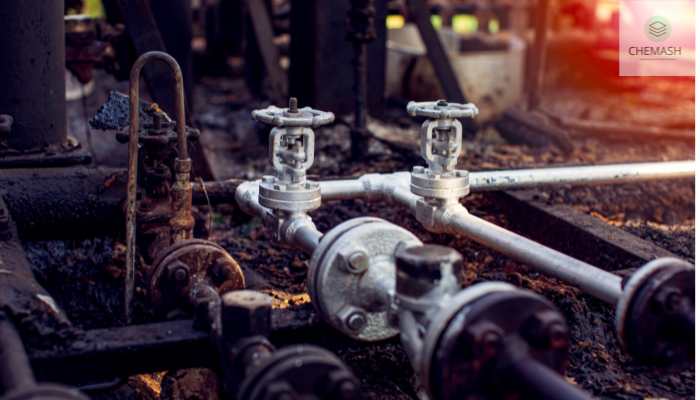Corrosion in Electrochemistry
Corrosion is a natural electrochemical process that leads to the deterioration of metals, especially in the presence of moisture and oxygen.
What is Corrosion?

Definition: Corrosion is the gradual destruction of metals due to chemical reactions with their environment, typically involving oxidation.
Common Example: Rusting of Iron
Rusting: When iron reacts with water and oxygen, it forms iron oxide (Fe2O3.xH2O), which weakens the metal.
- Occurs faster in salty or humid conditions
- Electrochemical cells form on the iron surface

Types of Corrosion
- Uniform Corrosion: Even surface degradation
- Pitting Corrosion: Localized holes or pits form
- Galvanic Corrosion: Between two dissimilar metals
Methods of Corrosion Prevention
- Galvanization: Coating with zinc to protect steel
- Painting/Oiling: Prevents moisture contact
- Cathodic Protection: Uses sacrificial anodes like zinc or magnesium
- Alloying: Adding chromium (e.g., stainless steel) increases resistance
Electrochemical Basis of Corrosion
Corrosion involves the formation of electrochemical cells:
- Anode (Oxidation site): Metal loses electrons (Fe → Fe2+ + 2e⁻)
- Cathode (Reduction site): Oxygen is reduced (O₂ + 4H⁺ + 4e⁻ → 2H₂O)
This redox reaction is what causes the metal to corrode over time.
Practice MCQs on Corrosion
- Which of the following metals is most prone to corrosion?
A. Copper
B. Gold
C. Iron ✅
D. Platinum - Rust is chemically:
A. Fe₂O₃·xH₂O ✅
B. FeSO₄
C. FeCl₃
D. FeCO₃ - Galvanization involves coating iron with:
A. Silver
B. Tin
C. Zinc ✅
D. Chromium - Which method uses a sacrificial anode?
A. Painting
B. Electroplating
C. Cathodic Protection ✅
D. Plastic coating - Galvanic corrosion occurs between:
A. Similar metals
B. Coated surfaces
C. Two dissimilar metals in contact ✅
D. Insulated metals
Related Topics:
- Electrochemical Cells
- Electrolysis – Principle and Applications
- Corrosion – Wikipedia
- Corrosion – Britannica
Understanding corrosion is key to protecting infrastructure, saving costs, and ensuring safety.
